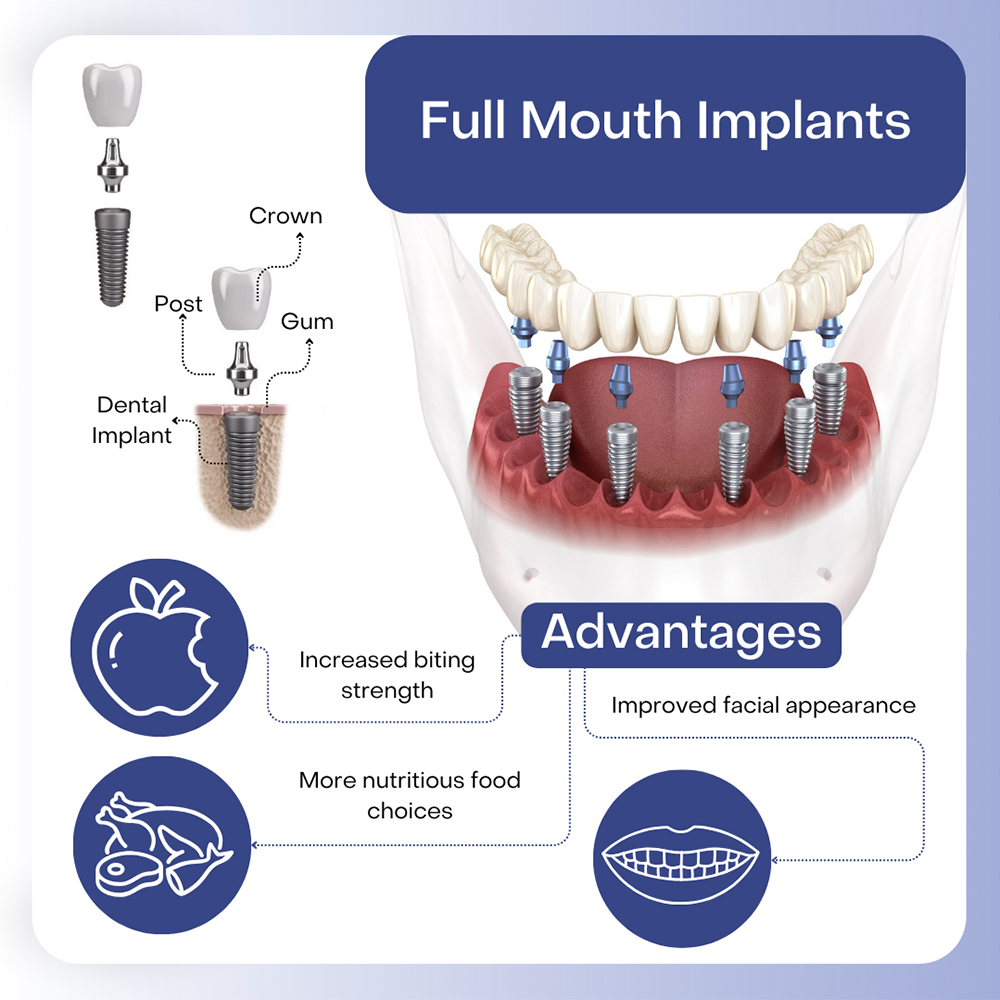Rumored Buzz on Dental Sense
Table of ContentsSome Known Details About Dental Sense How Dental Sense can Save You Time, Stress, and Money.Dental Sense Fundamentals ExplainedThe Main Principles Of Dental Sense
are medical gadgets operatively dental implanted right into the jaw to bring back a person's capability to chew or their appearance. They supply support for synthetic (phony) teeth, such as crowns, bridges, or dentures. When a tooth is shed as a result of injury or disease, a person can experience issues such as quick bone loss, malfunctioning speech, or adjustments to eating patterns that result in pain.Dental dental implant systems include a dental implant body and dental implant abutment and may likewise consist of an abutment fixation screw. Dental veneers cost. The oral implant body is operatively put in the jawbone instead of the tooth's root. The dental implant joint is typically connected to the implant body by the joint fixation screw and expands with gums right into the mouth to support the affixed man-made teeth
(https://dentalsense1.weebly.com/)Structure of The Oral Implant System choosing oral implants, talk to your dental service provider regarding the possible advantages and threats, and whether you are a candidate for the procedure. Things to take into consideration: Your total health is an essential consider figuring out whether you are a good prospect for dental implants, how much time it will take to recover, and for how long the dental implant may remain in place.
Smoking cigarettes might affect the recovery procedure and lower the lasting success of the implant. The healing procedure for the implant body may take several months or longer, throughout which time you normally have a short-term abutment in location of the tooth. the dental implant procedure: Meticulously comply with the dental health directions provided to you by your dental service provider.
Dental Sense for Beginners
Implant failing can cause the need for another procedure to fix or change the implant system. Recovers the ability to eat Brings back aesthetic look Helps keep the jawbone from reducing due to bone loss Maintains the health of the bordering bone and periodontals Assists maintain adjacent (close-by) teeth stable Boosts lifestyle Damages to surrounding all-natural teeth during implant positioning Injury to the surrounding tissues during surgical treatment, such as sinus perforation Injury during surgical treatment (as an example, fracture of bordering jawbone) Inadequate function, such as seeming like the teeth do not bite with each other usually An experience that the tooth hangs or turning in position resulting from an abutment screw loosening up Implant body failing (looseness of the implant body) because of systemic infection, which may be most likely in individuals with unrestrained diabetes mellitus due to neighborhood infection in bone and periodontals sustaining the dental implant body as a result of postponed healing, which may be more probable in people that smoke Difficulty cleansing the gums around the implant, resulting in inadequate oral hygiene Untreated gum disease Post-surgical numbness due to nerve impingement or damage Always inform healthcare providers and imaging professionals that you have dental implants before any magnetic resonance imaging (MRI) or x-ray treatments.
FDA is not knowledgeable about any type of unfavorable occasions reported for MRI or x-ray procedures with oral implants. Dental implants systems are normally constructed from products that adhere to international agreement requirements of the International Organization for Standardization (ISO) or ASTM International. These standards have details of what makes a risk-free product.

A dental implant is a framework that changes a missing tooth. With screw-like devices, the specialist inserts an implant into the jawbone, and it acts as a support for a fabricated tooth, called a crown.
The Facts About Dental Sense Uncovered
Some people are not qualified for oral implant surgical procedure. It is for oral doctors to operate individuals with: intense illnessuncontrollable metabolic diseasebone or soft cells disease or infectionIf these concerns are dealt with, an individual can have the surgical treatment. In, dental surgeons avoid operating individuals with: If people with any of the above undertake oral implant surgical treatment, there is a higher threat of the dental implant stopping working.

Oral implant surgery is a customized procedure. It's not the very same for everybody. The adhering to gives a general introduction of what you can expect your dental expert, dental specialist, periodontist or prosthodontist to do: Place the dental implant operatively. Give you time to recover. Attach the message and last crown, bridge or denture.
Next, your doctor will carefully position the oral implant into your jaw. If your implant is near the front of your mouth, your dentist will make a momentary tooth for you to use up until you heal.
How Dental Sense can Save You Time, Stress, and Money.
Your provider can tell you what to expect in your circumstance. During the healing stage, your jawbone must fuse to the oral implant. This process, called osseointegration, is important for stability and long-term success. This process can take anywhere from three to 9 months. In many cases, it might take much longer.
Once your implant heals, your dentist can attach the abutment (little adapter message) and your last repair (crown, bridge or denture). This normally takes concerning one hour to complete and might need a 2nd minor surgical treatment. You shouldn't really feel any pain throughout your dental implant treatment since your copyright will certainly make use of medicine to numb your gum tissues.